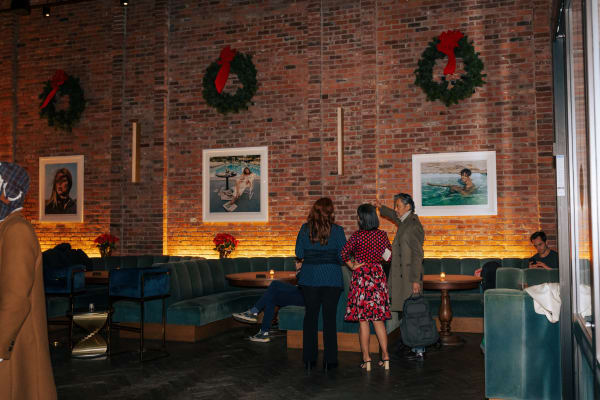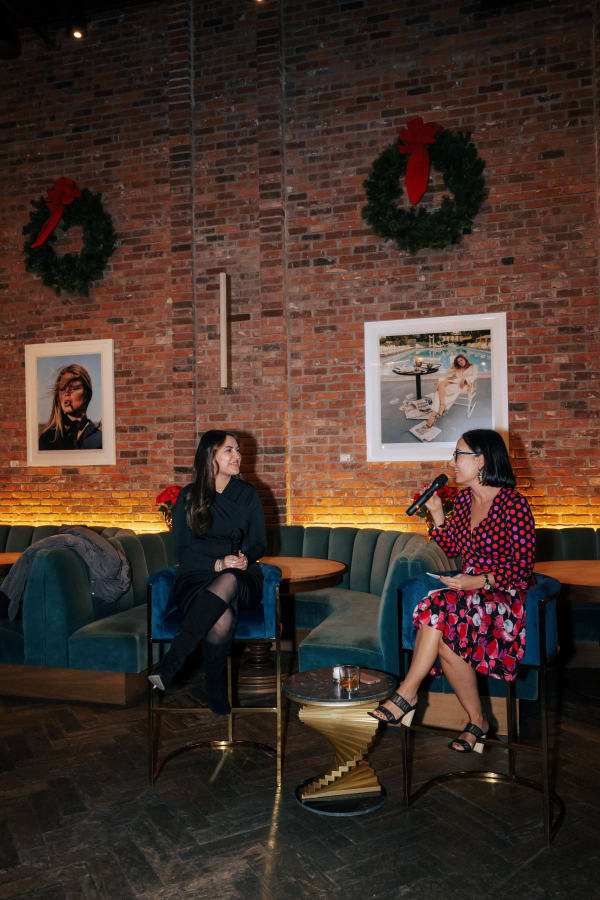Terry O'Neill on view at the Arlo Hotel
A conversation about the artist's legacy
Guy Hepner and the Arlo Hotels are pleased to continue their curatorial collaboration, highlighting the iconic works of Terry O'Neill.
The works are currently on view at their new Williamsburg location, through March 2024.
For the opening, we hosted a Q&A going into depth on O'Neill's career, and the photography market as a whole. Read the Q&A Below.
For more details on the works on view contact info@guyhepner.com
Tell us a bit about Terry’s background, where he started and how he became such an icon in photography?
Terry O’Neill fell into his photography career almost by chance. He had dreams of becoming a flight attendant and traveling the world, but when the airline had no open attendant positions, he accepted a spot to be an airport photographer. He jokes that he snuck into the industry, and in some ways he may have seen more of the world than he ever would have imagined. This gave him what became his signature style of capturing people in unconventional and candid settings.
What set Terry’s work apart from his peers?
At a time where most photographers were known for documenting war, politics, and environment, O’Neill established himself as a documentor of culture. Today we live in a society where celebrities often overshare every detail of their life, where in the 60s, very likely Terry was the only person with access to the inner lives of the stars. Whether it was on set or backstage, he was often the first choice as he truly was a trusted friend to many important figures.
Do we know what his favorite camera was to shoot with?
All of Terry’s photos were taken on film and he owned only two cameras throughout his career - a Leica and a Hasselblad. He viewed the camera as a tool and even once admitted that he hates the technicalities of cameras, keeping it simple with two of the best film cameras out there.
Can you tell us some behind-the-scene stories about his photos?
Many of his photos were unplanned, and came to life in the spur of a moment. His iconic Audrey with Dove, while almost looks perfectly crafted, happened by chance when a white dove serendipitously sat on her shoulder on set. Another iconic photo was Faye Dunaway by the Pool, which was taken the morning after she won her first oscar. O’Neill wanted something more personal than the standard post Oscar shot at the event. He wanted to capture the next morning when the shock sets in.
On another note, what would you say are some of the indicators of fine art photography vs everything else we see on a daily basis?
The difference between a regular photo and a fine art piece is the process. Nowadays, we all have access to a phone, and thousands of photos on there, but for artists they often don’t consider a piece complete until it is printed and on the wall. With film, photographers don’t have endless shots like digital so it is often meticulously planned.
Does this type of photography hold its value over 10-20 years let’s say?
Photography absolutely holds investment value, currently the highest sold photograph was 12 million by Man Ray piece and today photography is viewed as important as any other medium. As a collector I think it’s always important to learn about the printing type, edition size, and see if you like more than just one piece from the artist. The most fascinating pieces are the ones that ignite a curiosity of the story behind it. Some of the highest valued photographs are those of people, like the ones here, and many of O’Neill’s editions are already entirely sold out, making the only way to purchase them the secondary market.
December 20, 2023




